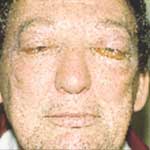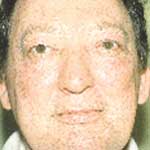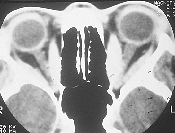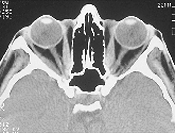Patience and steroids can save vision in dysthyroid orbitopathy
Medical intervention involves art as much as science.
MONT TREMBLANT, Canada — The majority of dysthyroid orbitopathy patients do not need surgical treatment, said John S. Kennerdell, MD. More often, physicians should offer medical treatment and patience as the best remedy.
Physicians can medically offer only so much, he said. At night, artificial tears, ointments and taped lids can control lagophthalmos. Patients can elevate the head of their bed, as well. During the day, sunglasses will control any photophobia the patient experiences.
And physicians can encourage patients to stop smoking or lose weight. After all this, physicians are often left counseling distraught patients about their appearance.
Knowing when to surgically intervene and when not to involves the art of medicine, not the science, Dr. Kennerdell said. He spoke about the role of nonsurgical management in dysthyroid orbitopathy at the North American Neuro-Ophthalmology Society meeting.
Orbital inflammation

 ---After failure on
high-dose steroid therapy, this patient was treated with external beam
radiation with a good final result that persisted after treatment.
---After failure on
high-dose steroid therapy, this patient was treated with external beam
radiation with a good final result that persisted after treatment.
Proptosis stems from the increased orbital inflammation that impedes
venous outflow. Although inflammation and congestion are distinct, they are
related, Dr. Kennerdell said.
Dysthyroid orbitopathy is an autoimmune disease. But scientists do not have a specific immune reaction to combat. This leaves them with “crude forms of therapy” such as steroids or radiation, Dr. Kennerdell said.
“Because we don’t have a randomized, scientific way of dealing with these people, and the patients are so different individually, we individualize treatment from patient to patient,” he said.
Using steroids
 ---Proptosis is
seen in patient with dysthyroid orbitopathy in this CT, axial
view.
---Proptosis is
seen in patient with dysthyroid orbitopathy in this CT, axial
view.
Severe inflammation should be treated with high-dose
corticosteroids, Dr. Kennerdell said. He recommended 80 mg prednisone in
divided doses. He does not inject steroids locally because it is an
uncontrolled, ineffective method that can create long-term problems.
He maintains the high-dose regimen until visual function approaches normal and then tapers the dose for 3 months.
Initial responders who continue to worsen when steroids are tapered, or intolerant patients should receive low doses of radiation, about 25 Gy.
Proptosis from chronic inflammatory fibrosis will not respond to these treatments, Dr. Kennerdell said. Steroids and at times radiation are used in a temporizing manner, and surgery is needed.
“I really don’t like using steroids,” he said. “I hate that drug, but sometimes we have to.”
Catch the wave
 ---Same patient post
treatment with high dose steroids, CT in axial view.
---Same patient post
treatment with high dose steroids, CT in axial view.
Effective steroid treatment depends upon recognizing the height of
inflammation, Dr. Kennerdell said.
“We use steroids in acute congestive patients, very acute congestive, or in some sub-acute congestive, but not in a chronic state,” he said. “By trying to ‘catch the wave,’ if you will, we have had some good fortune in using steroids.”
He added that he does not use non-steroidal anti-inflammatory drugs. Patients experiencing headaches with dysthyroid orbitopathy are not dealing with pain specifically caused by thyroid inflammation. More often they complain of pain because they are stressed by a disease that alters their appearance and causes diplopia, tearing and photophobia.
For Your Information:
- John S. Kennerdell, MD, can be reached at Allegheny General Hospital, 420 E. North Ave., Ste. 116, Pittsburgh, PA 15212 U.S.A.; +(1) 412-359-6300; fax: +(1) 412-359-6768. Dr. Kennerdell has no direct financial interest in any of the products mentioned in this article, nor is he a paid consultant for any companies mentioned.
